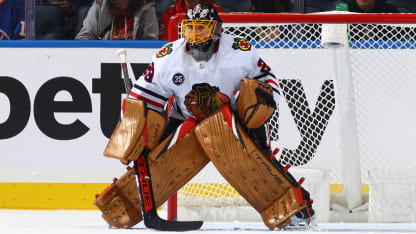That was one of the reasons Frederik Andersen, switched away from his composite stick last season with the Toronto Maple Leafs.
"I felt like I wanted a little bit more substance to the stick just in terms of feeling the puck when I stopped it," said Andersen, who used a True foam core.
Andersen, now with the Carolina Hurricanes, is back using a composite model from True.
"Composite sticks are so nice right now, so well made," he said. "They don't break as much as they did in the beginning, and I found with the wooden sticks, they'd get beat up in practice pretty good and lose their strength pretty quick."
Another advantage of composite sticks is that once a goalie finds a model he likes, a mold is made and he can count on it to weigh, flex and feel the same with each new stick. That wasn't always the case with the wood-based sticks, which can come with the inevitable inconsistency of natural materials.
Like players, goalies can now customize various elements like flex and kick point for passing and shooting, as well as grip shapes and trigger notches cut out from the inside of the paddle to place their index finger, which can help avoid pinching it on the ice during a paddle down save. Materials have also improved, with blends of carbon fiber and impact- and vibration-dampening materials designed to mimic the feel of their wood-based predecessors.
No wonder Fleury continues to at least try them, with another set of composite samples set to arrive in Chicago this week. Just don't count on him switching yet, at least not as long as there remains at least one foam core alternative.
"There's just something about the feel of those old sticks that I like," he said.

